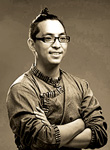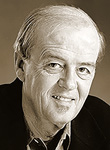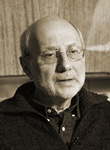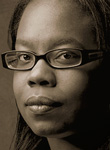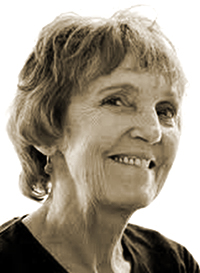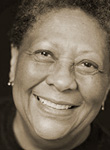When the work for this issue of Blackbird made it through our system and headed into pages, the COVID-19 pandemic was still a second-tier news item from China. Now the coronavirus dominates our consciousness: how we think, how we read, how we see. For better or worse, it colors what any reader brings to these poems, these stories, and these essays.
For this reason, we have decided to revisit previous Gallery presentations that reflected on the centenary of the 1918–1919 flu pandemic. Blackbird presents a coda to that work with newly featured materials.
As James A. Hayne noted in an address to the South Carolina Medical Association in the spring of 1919, that “dread epidemic was perhaps the worst the world has ever known, and has taken its toll from every known country, and has spared no race. Oceans have not kept it in bounds, not have the highest mountain chains prevented its spread.”
Some of the writers in this issue have engaged the troubles of this country and this world as it existed pre-2020; some have chosen to operate in a less defined and more existential space. All of them have deployed into an investigation of relationships—trying to find them, mend them, and remember them. Following E.M. Forster’s dictum to “only connect,” these writers bring news and comfort that we need to hear and receive if we are to follow Forster’s other dictum, that we “live in fragments no longer.”
Each spring, Blackbird’s Introductions Reading Loop recognizes new artists of note whose work strikes us as exceptionally fine and full of promise. Joining this company for 2020 are fiction writers Jose M. Martinez and Caroline McCoy, nonfiction writer Sejal Shah, and poets Felicity Sheehy, Samyak Shertok, and Matthew Wimberley.
In “Mariana,” Jose M. Martinez traverses the landscape of memory to provide an intimate narrative that examines a unique family and childhood dynamic. “You remember,” the speaker states, “not being able to feel anything serious. . . . the faces of your own kin when they ask you . . . why you couldn’t stop sobbing . . .”
Caroline McCoy’s “Summit” explores the specific mountainous terrain of the western North Carolina Smokies as recollected by Warren, her octogenarian protagonist, who is faced with navigating the equally treacherous terrain of increasing age. As he pictures his granddaughter crossing that familiar ground, “He imagined sitting beside her at the mountain’s summit, tired and thirsty and proud of them both.”
Sejal Shah’s nonfiction piece “India West” reconnoiters the contrast in certain relationships as a vehicle through which to reveal and break stereotypes. As she tells us, “If I say, that guy, he’s a nice guy, it means I liked him once or he liked me. If I say, he’s a good guy, it means I might have kissed him or maybe he kissed me. Why give all my secrets away? This is not what I wanted to say.”
Samyak Shertok’s poetry takes on the details of his Nepalese heritage to ground a poetic practice that owes more to inexplicable inspiration than to unambiguous decision. “But how a poem happens is largely a mystery to me,” he explains, “and I like it this way.”
Felicity Sheehy’s poems use mythology and keenly observed imagery as a lens through which to examine the obstacles and complexities of womanhood. As she states in “Apollo Catches Daphne,” “women / are always turning into something / else,” leading to the conclusion that “Something in them wants to be / something strange, something / to do with beauty, I suppose.”
Matthew Wimberley’s poems crisscross landscapes of rivers, mountains, and skies, offering a distinctive perspective of the self in the natural and urban world and placing the poet in direct conversation with nature and its traditional domination of poetry’s lyric mode. In “Snowmelt,” the poet observes “I can remember that life, / the one inside of this one, / and so I must think also / of the one still to come.”
The fifth annual Claudia Emerson Reading Loop features the text of Emerson’s 2014 Virginia Commonwealth University English Department Commencement Address, an essay by Leslie Shiel that provides a close reading of the poem “On Leaving the Body to Science” as well as memories of Emerson as a mentor and friend, and a previously unpublished poem, “The Bookmobile Lady: Pittsylvania County, Virginia.” This poem, like much of Emerson’s work, honors the small town and rural women who were her neighbors and childhood friends, “women // drove it and women walked to meet it, time / and place predetermined, a church’s parking lot, // country store.” Snapshots from Emerson’s family and adult life round out the presentation.
New translations of six poems from Patty Crane’s ongoing engagement with the work of Swedish poet Tomas Tranströmer deftly illustrate Jean Valentine’s observation that Tranströmer’s “silences are like silences in music, like negative space—time notation, notation of depth.” In “Funchal,” we are invited to study “The innermost paradox, the garage flower, porthole to the good darkness. A drink bubbling in an empty glass. A loudspeaker broadcasting silence. A footpath growing back after every step. A book that can only be read in the dark.”
Nine previously unpublished poems by James Tate place the reader in a world that shares a sensibility with a Magritte painting—the familiar is partially obscured by the oddly out of place. “Hovering over me all night was some kind of spirit. I didn’t know / who or what it was, but it made me uncomfortable,” he tells us. Like the speaker in “The Bag of Feed,” the poet seems unrecognizable in his work, and vanishing without it. What remains is an awful but playful existential paradox.
Mikhail Aizenberg’s “It’s really nice around here,” one of three poems translated by Boris Kokotov, oscillates between simple pleasures and profound despair. A lovely scene of warm weather and pretty people “couldn’t be more rousing or pleasing.” In a second, “it’s over,” and worse, “the memories are lost.” But within that loss lie possibility and glimmers of light, “like fireflies that dance and softly flicker.” “When a roundelay ends don’t ask / why was it so precarious and fleeting,” he tells us.
Carol Ann Davis employs the measured rhythm and breath of caesuraed lines to observe the beauty of an egg within “the mower’s hand” which “spews beatitudes,” that are “matchless as any blue in any sea.” She also asks us to consider “if this blooming || formed a kind of looking / of attic noise || and leaf-must || under the smooth wing || of small burden || into scarcity and loss.”
Jennifer Franklin’s work examines children wrenched by biological circumstance or by community from love and family. “Judith beheading Holofernes does not frighten me. I watched Saturn devour my child for nine years and now I watch as children suffer behind bars,” she tells us. As she says in “June,” “All that gold light above the quicksand—as if nothing can save us,” and in “Still Life with Gold,” “You love what you want them / to have been.”
TJ Jarrett occupies some of the same territory in “The Children (Part II),” a relentless, almost single sentence that roars toward a devastating conclusion. The titular children are imprisoned, and their “nightguards police their fury with pills, / their dreams with guns, and their attempts at comfort with billy-sticks.” Masks, we are reminded, can obscure harm as well as protect from infection.
Margaret Mackinnon’s work plumbs the distant past for inspiration: in one poem a Hieronymus Bosch painting from the 1470s and in the other the story of Virginia Dare, the first English child born in North America. Her interests seem to lie in “those minor actors / who are like us— / some human tangle of wonder // and despair,” and the work celebrates mysteries, the “half-shadows / imagination brings” and “all that is lovely, strange.”
“My Brother the Artist, at Seven” by Ranjana Varghese inhabits the sensory world of a young child discovering the blossoming magic of words. Exploring a world of “cloistered / gardens” and “neon-bright houses,” the speaker’s brother explodes with fresh, rich language, connecting each utterance to flights of his imagination: “stars in daylight, / spiders stalking sky, tigers laughing at their reflections, / birds growing wings of sunlight.”
In Fiction, Amina Gautier’s two short pieces resonate against each other to parse the detritus and detail that remain when a relationship ends. The smallest objects echo with longing, frustration, anger, and loss. In “Everything,” a simple box of belongings takes center stage, carrying a metaphorical weight that dwarfs a pair of slippers or a commemorative shot glass: “There wasn’t even room for all there was.”
Marilyn Nelson continues her translation from the Danish of the late Inge Pedersen’s fiction with “Seedlings,” a third installment from a previously untranslated novel. Here, the narrator has left her family and finally begins her education. Even as socializing with the other students is fraught with uncertainty, she relishes the learning: “every evening before I went to bed I sharpened a pencil and wrote, only a few lines, a couple of sprouting sentences, small green seedlings.”
In Nonfiction, a third section from the late Wesley Gibson’s You Are Here: A Memoir of Arrival, originally published by Back Bay Books in 2004, continues to limn the saga of his move from Richmond to New York City. In this excerpt, and with his trademark wit, Gibson describes the difficulties of writing and working in a community still reeling from the AIDS epidemic as he comes to terms with his queerness, and with his friend John who “didn’t want to take the one small step that was actually the giant leap of admitting that he might be dying. . . . the hospital would be the mirror’s glare that reflected his own death.”
In “Where Are You From,” excerpted from his memoir Scholarship Boy, Larry Palmer reflects on his teenaged self, newly matriculated as a freshman at Exeter, and developing a growing interest and skill in photography. Hovering in the back of Palmer’s mind, however, is his brother Willie, who initially exposed him to photography’s magic, and yet whose “lessons in life and photography faded into the shadows along with many other things I left back home.”
In Andrew Wachtel’s translation of Anzhelina Polonskaya’s nonfiction piece “Death is White,” the weight of mortality exercises an intrusive omnipresence, underlining a pervasive dichotomy of family, death, and poetry. The speaker states “I remembered what a friend told me about the death of his father. The old man had begun to go blind. . . . After the operation . . . he suddenly started having dreams about white birds.”
Reviews by Joy Katz of Sarah Vap’s Winter and by Weston Morrow of Emily Skaja’s Brute round out the section.
Features includes an audio capture of Clint McCown and Jessie van Eerden reading at Virginia Commonwealth University’s James Branch Cabell Library on April 3, 2019. McCown read poems from his new and selected volume, The Dictionary of Unspellable Noises, while van Eerden read an excerpt from “Blessed Be the Longing that Brought You Here,” an essay that examines loneliness and a primeval desire for human connection.Return to top menus | Browse issue




